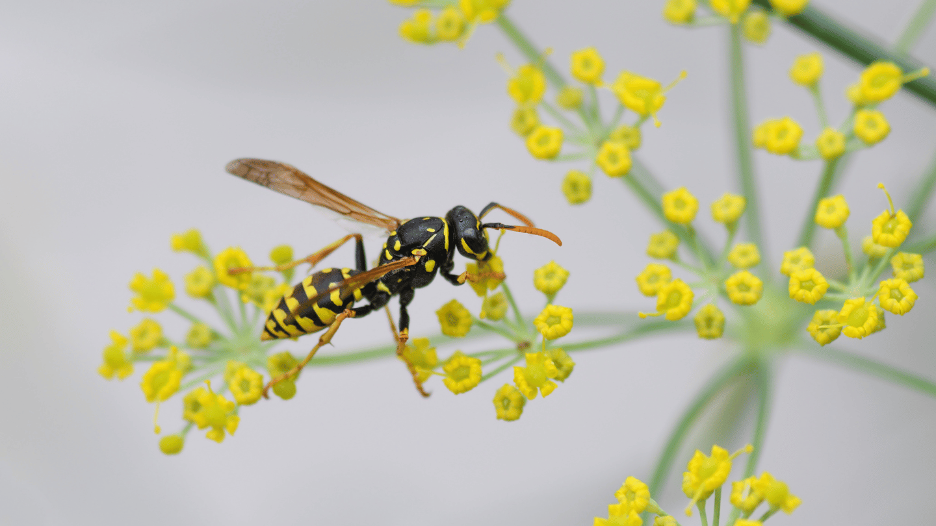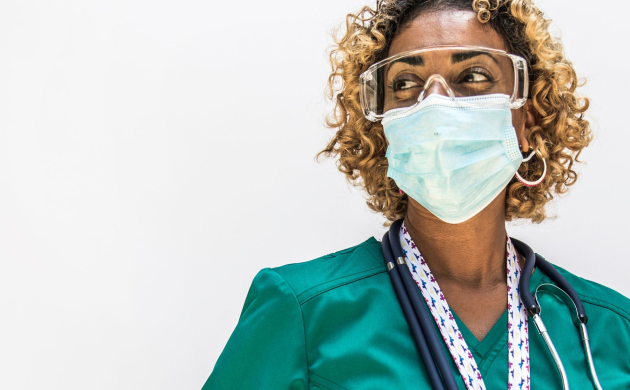
Got stung by a wasp? Here’s how to handle it safely.
Most wasp stings are more bark than bite. Sure, they can hurt for a while, but they're usually not dangerous. But that reaction can be more intense or even dangerous for some people.
Knowing how to handle a wasp sting properly can be the difference between a minor interruption and a trip to the emergency room. Quick action and smart choices help minimize the pain, reduce swelling and get you back to enjoying your day faster.
Whether this is your first wasp encounter or you're unfortunately familiar with their aggressive stings, we'll walk you through everything you need to know: what to expect, proven home treatments for wasp stings that actually work and the warning signs that mean it's time to seek professional medical care.
What does a wasp sting look and feel like?
If you've been stung by a wasp, you'll know it immediately.
These insects don't hold back: the sting delivers a sharp, unmistakable pain that gets your attention fast. Unlike bees, which can only sting once, wasps are capable of multiple stings and they often take advantage of that ability.
The initial sensation is intense and burning, like being jabbed with a hot needle. This sharp pain typically transitions into a throbbing ache lasting for hours.
Here's what you can expect to see and feel:
- Immediate redness and swelling around the sting site
- A raised bump or welt at the point of contact
- Intense burning pain that gradually becomes a persistent soreness
- Itching that develops within minutes of the sting
- Sometimes a white or pale center where the stinger made contact
For most people, these symptoms remain localized to the sting area and improve gradually over the next few days.
But those with insect allergies or who have received multiple wasp stings may experience more serious reactions, including nausea, dizziness, or breathing difficulties.
Uncertain whether you've been stung by a wasp, bee, or another insect? The specific type matters less than monitoring how your body responds. The key is watching for symptom progression and knowing when professional medical care becomes necessary.
Wasp sting treatment: how to reduce swelling and itching.
The good news about wasp stings is that most reactions are completely manageable with prompt, proper care.
Here's your step-by-step action plan for treating a wasp sting at home:
- Start with the basics. Gently clean the area with soap and water. This simple step helps prevent bacteria from setting up shop in the damaged skin.
- Apply a cold compress. Apply a cold compress or ice pack for 10-15 minutes at a time. The cold helps numb the pain and keeps swelling in check. Just wrap that ice in a cloth; direct contact can damage your skin.
- Take an over-the-counter antihistamine. An over-the-counter antihistamine like diphenhydramine (Benadryl) can significantly reduce itching and calm your body's inflammatory response.
- Use hydrocortisone cream or calamine lotion. Hydrocortisone cream or calamine lotion applied directly to the sting site relieves itching and inflammation.
- Keep the area elevated. If the sting is on your arm or leg, keep it elevated when possible. This helps reduce swelling by encouraging fluid drainage.
- Resist the urge to scratch. We know it's tempting, but scratching can break the skin and open the door to infection, which turns a simple sting into a bigger problem.
This approach resolves most mild reactions within a few hours to several days.
When wasp sting treatment requires urgent care.
Most wasp stings are nothing more than a painful inconvenience, but sometimes your body's reaction crosses the line from "annoying" to "actually concerning."
When symptoms start spreading or getting worse instead of better, it's time to stop trying to tough it out.
Visit your local CityMD if you notice:
- Swelling that spreads. If the swelling spreads well beyond the sting site or starts affecting your face, lips, or eyes, your body is overreacting and needs professional intervention.
- Signs your sting is getting infected. Watch for increasing warmth around the area, pus, or red streaks extending from the sting site. These are clear signals that bacteria have joined the party uninvited.
- Pain or itching that won't quit. If over-the-counter treatments aren't making a dent after a day or two, or if symptoms are actually getting worse, something else might be going on.
- Feeling off in other ways. Dizziness, nausea, or vomiting after a sting can indicate your body is having a more serious reaction than just localized irritation.
For people with insect sting allergies, a wasp encounter can trigger anaphylaxis, a severe, whole-body allergic reaction that's absolutely a medical emergency.
Call 911 immediately if you or someone else experiences:
- Difficulty breathing or shortness of breath
- Tightness in the throat or chest
- Swelling of the tongue or face
- Rapid heartbeat or feeling faint
At CityMD, our medical providers can quickly evaluate your symptoms and provide targeted treatment, whether that's prescription antihistamines, corticosteroids to reduce inflammation, or guidance on preventing future reactions.
Final thoughts on wasp sting treatment and when to get help.
Getting stung by a wasp is never fun, but it doesn't have to ruin your entire day or week. With the right approach, most stings are manageable at home and resolve without complications.
The key is knowing what's normal, what's not and when to seek professional help.
At CityMD, we make it easy to get the care you need when you need it. No appointment necessary. Just walk in any day of the week for fast, expert treatment and the peace of mind that comes with knowing you're in good hands.

We’re ready to care for you.
Visit any CityMD urgent care location in your community today for an evaluation with one of our expert providers.